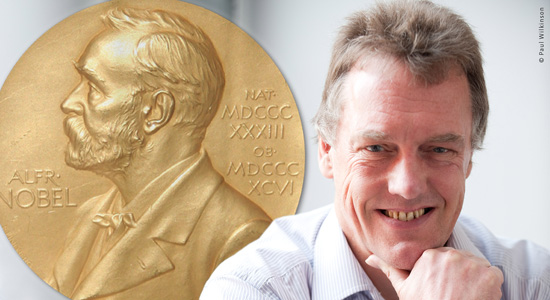9 October 2019 – The Royal Swedish Academy of Sciences awarded this year’s prize jointly to Peter Ratcliffe, William G. Kaelin Jr. of Harvard University, USA, and Gregg L. Semenza of the John Hopkins University School of Medicine, USA, “for their discoveries of how cells can sense and adapt to oxygen availability.”
Peter Ratcliffe has conducted extensive research into how cells sense and signal hypoxia, and the maintenance of oxygen homeostasis, a crucial process for all large animals. During hypoxia, levels of a protein called HIF-1α rise, enabling it to bind to and regulate a DNA segment that produces EPO, a hormone that stimulates red blood cell production. Peter Ratcliffe’s work demonstrated the functionality of this oxygen sensing mechanism in many different cell types. His studies led to the discovery of the physical interaction between the von Hippel-Lindau (VHL) protein and HIF-1α, which leads to the degradation of the latter at normal oxygen levels. He also identified the specific hydroxyl groups that mediate this oxygen-dependent response.
Collectively, this year’s Nobel Laureates have uncovered the mechanism by which cells adapt to variations in oxygen levels, one of life’s most essential processes. Since hypoxia plays a key role in many human diseases, including anaemia and cancer, these discoveries have also opened up new approaches to fighting them.
Elected to the EMBO Membership in 2006, Peter Ratcliffe is now the 89th Nobel Laureate among the EMBO Members and Associate Members. He also sits on the advisory boards of three EMBO Press journals, namely The EMBO Journal, EMBO Reports and EMBO Molecular Medicine.




